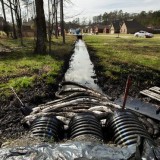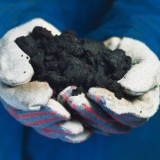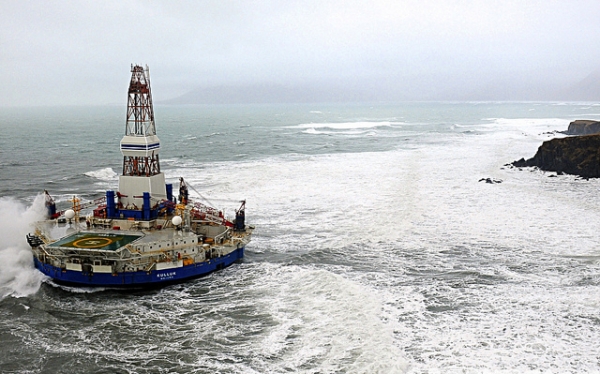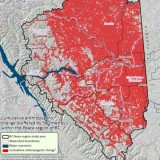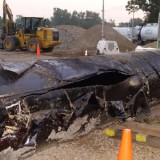Gary Mason’s column in the March 12 edition of The Globe and Mail, on Christy Clark, is very interesting. The premier is complaining about the lack of precision in the NDP’s plans and calls upon Adrian Dix to spell it all out.
What is most interesting is Ms. Clark’s position on issues and what she deems those issues to be. (Remember that the Liberals have raised the provincial debt and other taxpayer obligations by some five fold, which should limit the generosity of both leaders).
“So not only are the people going to compare me with Adrian Dix,” said Clark, “they will be comparing leadership with an absence of courage to tell people where his party where his party stands on things. If we get into a competition of ideas in this campaign, I believe we can win that battle because I believe the things I stand for are what British Columbians want: a strong economy, smaller government, jobs for our kids, a prosperity fund, lower taxes.”
Leaving aside the prosperity fund nonsense for a moment, these words could have been attributed to all premiers I have listened to going back to my own days in the Legislature. Mindless crap, motherhood and apple pie – but predictable.
Clearly, there are a number of things Ms. Clark does not wish to debate, especially the deplorable fiscal situation and scandals galore, with two fresh ones ongoing right now.
Let’s have a look at the promise involving the chimera she calls a “prosperity fund”.
This is simple barnyard droppings wrapped in a pretty package. You will remember that in the Throne Speech this “fund” would come to pass in two years. In an interview with Justine Hunter she admitted that might be up to five years – how long will it be Ms. Clark?
How about “never”.
The plain truth is that it will never happen. Even if LNG plants (the proposed sources of funds) sprang up all over the province, which they won’t, any revenue would be required for general taxation for a province Ms. Clark’s government, and the Campbell one before it, has left broke.
It would be just as accurate for Premier Clark to promise that our economy under a Liberal government – our “prosperity” – depends upon the Easter Bunny.
Let’s turn now to what the premier is not talking about – the environment.
Readers will recall that the environment has never been a major issue in elections. The media types who conduct and participate in the traditional debate never raise this as an issue because their bosses won’t tolerate anything that smacks of being anti-Liberal.
We have had a recent environmental question arise over a refinery to be built in Kitimat by David Black. Now this is the issue in a nutshell: Premier Clark, who has raised red flags regarding the proposed Enbridge pipeline to Kitimat, has hinted at her support for Black’s alternative venture, which would see diluted Alberta bitumen refined in Kitimat before being loaded onto tankers destined for other markets.
The premier says she opposes Enbridge because it doesn’t give BC sufficient revenue to compensate for the environmental ‘risk’. Black’s alternative involves a pipeline carrying the same product from the same place, along the same route, to the same destination, where it would then be refined before being loaded onto tankers. And yet, Clark somehow seems amenable to the newer proposal.
The only apparent difference is the greater share of provincial revenue and local jobs which Black’s proposal offers and the perceived lower risk of shipping refined products vs. diluted bitumen (only for the tankers – the pipeline would be moving the same Tar Sands product).
In essence the Liberal position is we will not approve these pipelines and tanker traffic unless the bribe is sufficient to permit us to overlook the risks.
Here is the crux of the matter. Surely all would agree that in order to meet the money versus pipelines and tankers issue we must assess what that risk is. That’s only common sense.
What, then, Premier Clark, do you assess these risks to be?
Surely there must be a formula. Tell us that it isn’t just flying by the seat of our pants, or pantsuits!
What studies has your government done to assess these risks? Have you looked at the history of pipelines the world over? Have you, more to the point, assessed the risks associated with Enbridge, whose record is appalling? Black, for his part, has zero experience moving oil products – hardly any more reassuring.
But it’s more than that, for you surely agree that before making this “risk for dough” assessment you must not only deal with the possibilities of a spill but what damages would flow.
What about, say, a spill in the Rockies, or in the Coast Range, or in the Rocky Mountain Trench or in the Great Bear Rain Forest? Or by tanker. In the case of pipelines, how in hell is a company going to get men and heavy machinery to the site?
I’m sure you’ve seen by now that you must not only assess the risk of harm in various sensitive areas, be they in a fjord, Vancouver Harbour, and in all sensitive areas, which, Premier, means everywhere in the province, but what the cost will be.
Are you familiar, Ms. Premier, with the Enbridge spill in the Kalamazoo River in July 2010? There, the spill was easily accessed yet 2½ years later it has still not been cleaned up.
I shouldn’t have to ask if you know the difference between dilbit (diluted bitumen) and refined oil.
But do you? Do you know what the consequences of dilbit accidents are?
Let’s call these spills/accidents for what they really are.
They are not risks but catastrophes waiting to happen. It’s not “if”, Premier Clark, but “when”.
What you are saying to the people of BC is that you are prepared to take a certain sum of money for inevitable “accidents”, wherever they happen and whatever damage they do.
At least be honest on this score so that the voting public has a clear understanding that for money you will abandon our heritage.
There are two other issues that I will go into in depth with as the days pass.
Your government is continuing to grant fish farm licenses in spite of Commissioner Bruce Cohen’s report. Indeed, your government is the landlord for all BC’s fish farms (signing off on the tenures they require to site and operate their farms), yet you have done no policing and the only fines ever imposed came from an NDP administration and the Campbell government gave them their fines back.
The only way these farms can make a profit is by sending their sewage (fish excrement, unconsumed food, anti-lice compounds, unconsumed medicines, drugs and colourants) into the oceans as raw sewage.
Quite apart from the appalling impact these hideous farms have had on wild salmon runs, the above should have you forcing these farms on land, as a recent federal government report recommended.
Will you do this – and if not, why not?
The weasel words, “run of river” projects, have decimated our rivers and, as with fish farms, no inspection of them takes place even though there have been 1000s of broken rules. BC Hydro, the jewel of our crown would be bankrupt if it were in the private sector because of the sweetheart deals your government has forced them to pay to private companies.
This is just one of the scandalous policies that have beset your government. What are you going to do about this issue?
Finally, Premier, why Site C Dam?
Is this really a process to provide energy to gas prospectors who can use that energy to “frack” for natural gas to make energy? And to power the liquefaction of natural gas (LNG), for which, in all likelihood, there will be no customers?
(By the way, Ms. Clark, have you even the faintest idea what the fracking process is all about, and the undetermined environmental impacts?)
Yes, Mr. Dix must come clean with his program and I intend to ask him questions like these. But you are the premier. You must deal with these issues and do so in specific terms, not barfed up stale marshmallows.
I assure you that you will hear about these issues again, for many British Columbians, including me, believe our environment and the fauna and flora it creates and protects is worth more than simply a token amount that they consider, and write off, as a cost of doing business no matter how much that may be.

